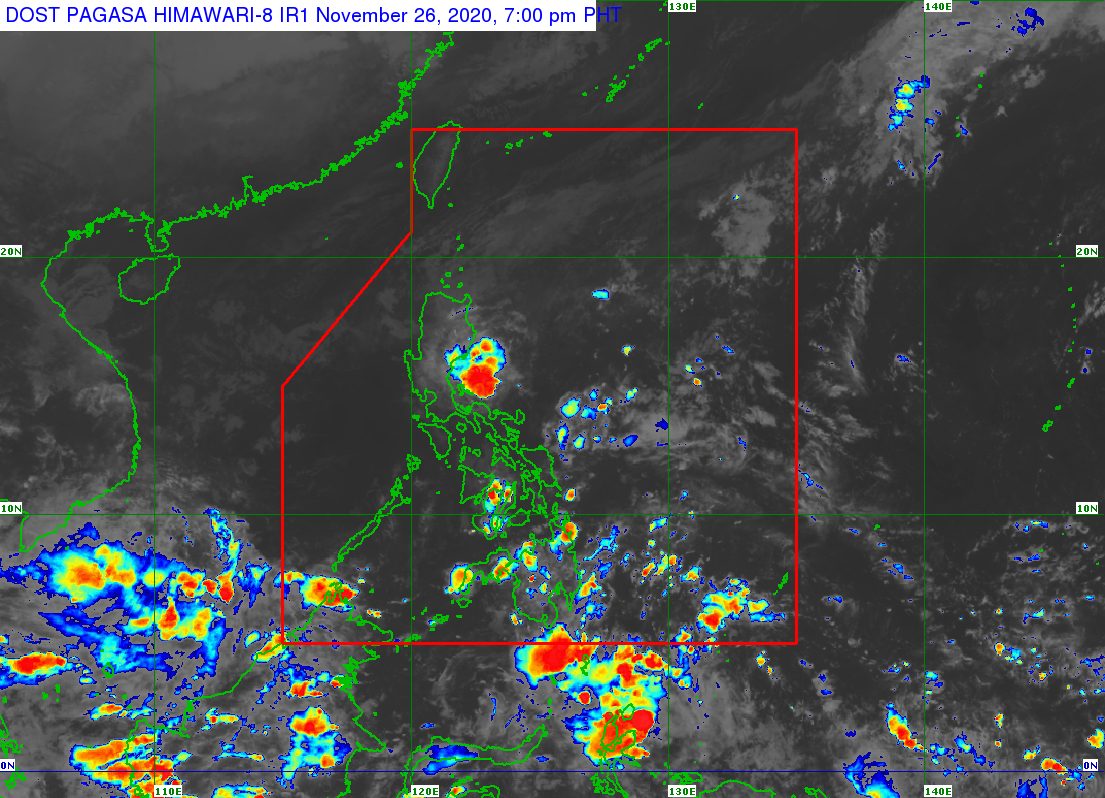SUMMARY
This is AI generated summarization, which may have errors. For context, always refer to the full article.

A low pressure area (LPA) that formed inside the Philippine Area of Responsibility (PAR) was bringing rain to the provinces of Aurora, Quirino, and Isabela on Thursday, November 26.
The Philippine Atmospheric, Geophysical, and Astronomical Services Administration (PAGASA) said in an online briefing past 4 pm on Thursday that the LPA was located 265 kilometers east of Infanta, Quezon.
The LPA is not expected to develop into a tropical depression, according to PAGASA.
But it is causing scattered rain and thunderstorms in Aurora, Quirino, and Isabela, which may persist until Friday, November 27.
PAGASA warned that there could be flash floods and landslides during periods of moderate to heavy rain.
Aside from the LPA, the state weather bureau is not monitoring any other weather disturbance. (READ: FAST FACTS: Tropical cyclones, rainfall advisories)
The Philippines’ last tropical cyclone was Typhoon Ulysses (Vamco), which left at least 73 people dead in Luzon two weeks ago. About a third of the fatalities were from the region of Cagayan Valley.
For Thursday evening until Friday, Cagayan Valley, Kalinga, Apayao, Mountain Province, and Ifugao will have light rain due to the northeast monsoon or hanging amihan. PAGASA said there will be “no significant impact.”
The easterlies, or warm winds coming from the Pacific Ocean, may also trigger isolated rain or thunderstorms in Bicol, Mimaropa, the Visayas, and Mindanao. In case of severe thunderstorms, flash floods or landslides could occur.
The Philippines has had 21 tropical cyclones in 2020, already above the yearly average of 20.
In December, up to 3 more tropical cyclones are seen to form inside or enter PAR. (READ: LIST: PAGASA’s names for tropical cyclones in 2020)
La Niña has been underway since October, causing more rain than usual in the country. – Rappler.com
Add a comment
How does this make you feel?
There are no comments yet. Add your comment to start the conversation.